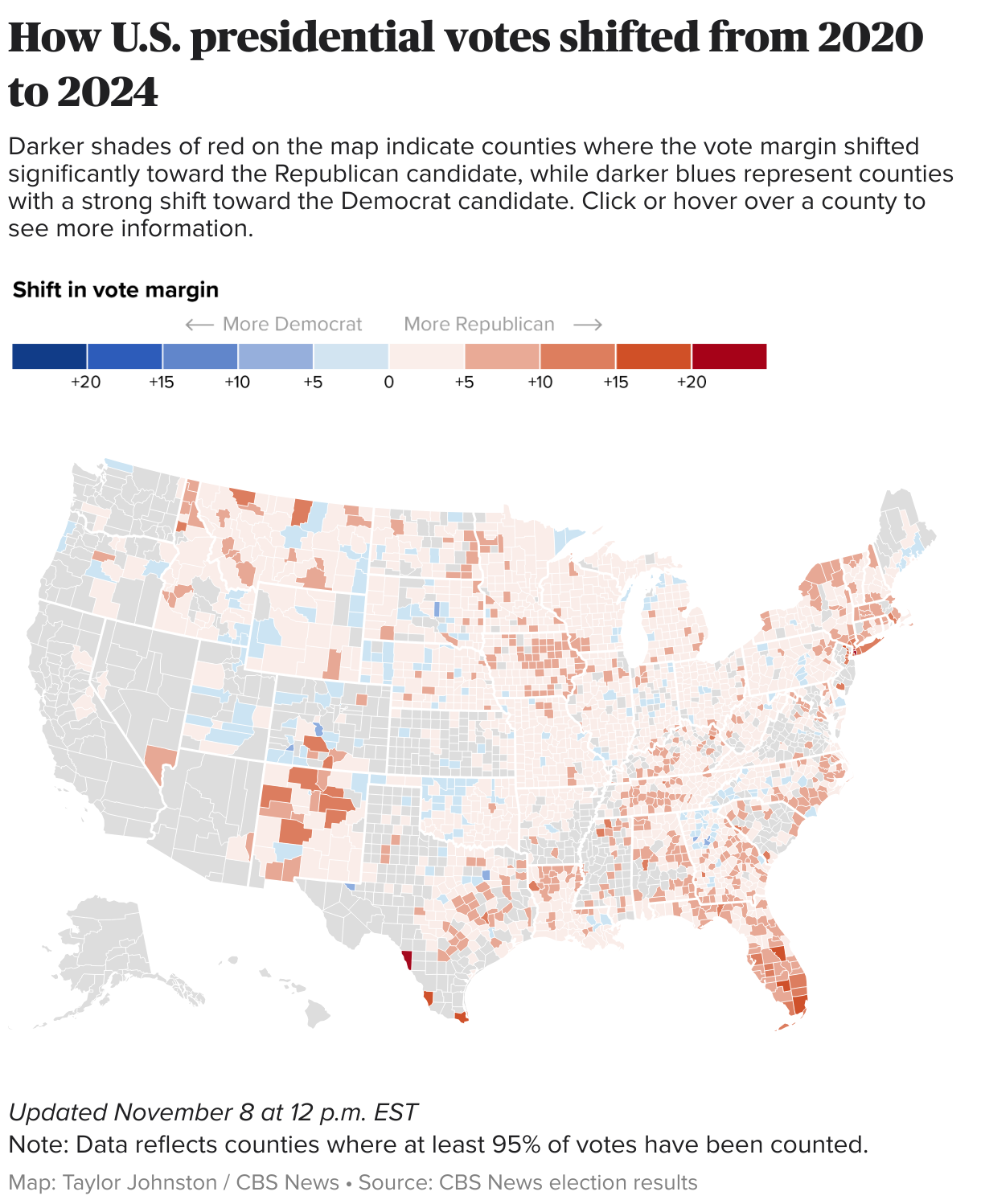Let’s get one thing straight: Kamala Harris didn’t lose the 2024 election because of racism, misogyny, or some other well-worn buzzword that lets her and the Democratic Party off the hook.
For months, Harris worked to ensure that the most essential voters she needed were unhappy with her. Kamala lost because her campaign was a political exercise in arrogance and had nothing to say to the voters who are worried about the same things that worry us.
Trump Obliterates Harris in 2024 Election
This wasn’t merely a win for Trump; it was a political knockout. Harris’ future isn’t just looking dim; it’s downright dark, while Trump’ victory not only cements his place as a major force in American politics but also insures that the Sisyphean nature of that other 2016-2020 Trump-era stone will roll upward once again. Buckle up becuase the next four years will be anything but quiet.
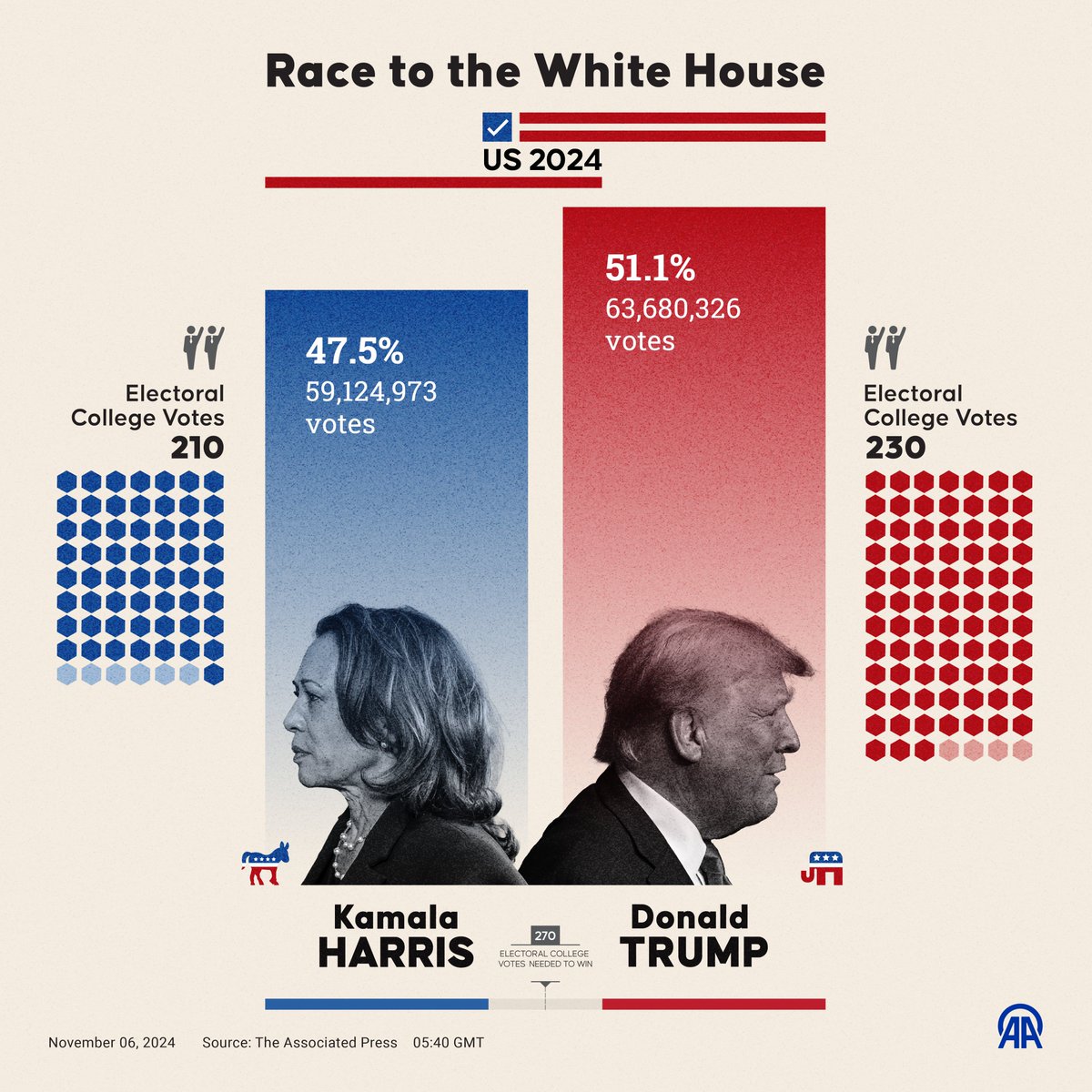
As we witnessed on November 5th, Kamala Harris faced a presidential election defeat in 2024 against Donald Trump, who claimed 51. 1% of the popular vote to her far less impressive 47. 5%. Meanwhile, in the Electoral College, Harris also took a decisive loss, as Trump secured vital swing states and left her campaign in a shambles. An uninspiring campaign run by Harris offered little more than empty promises and bureaucratic clichés. At the same time, Trump mobilized his base with messages that resonated with working-class voters. As the dust settled from the election, discussions turned to the political landscape ahead, particularly in light of controversies such as Fauci’s pardon and its implications for public trust in government. Critics argued that the pardon could further polarize voters and distract from critical issues facing the nation. Meanwhile, Harris’s team began to reassess their approach, recognizing the urgent need for a more compelling narrative that could bridge the divides exposed by the election results. As Harris’s team strategized for the future, they acknowledged the broader challenges contributing to their defeat, including the decline of trust in journalism that had left many voters feeling disillusioned and skeptical of mainstream narratives. They understood that rebuilding trust would be critical not just for their party, but for the democracy itself. Moving forward, they aimed to craft a message that would authentically engage with the concerns of everyday Americans, while countering the misinformation that had proliferated across various media platforms.
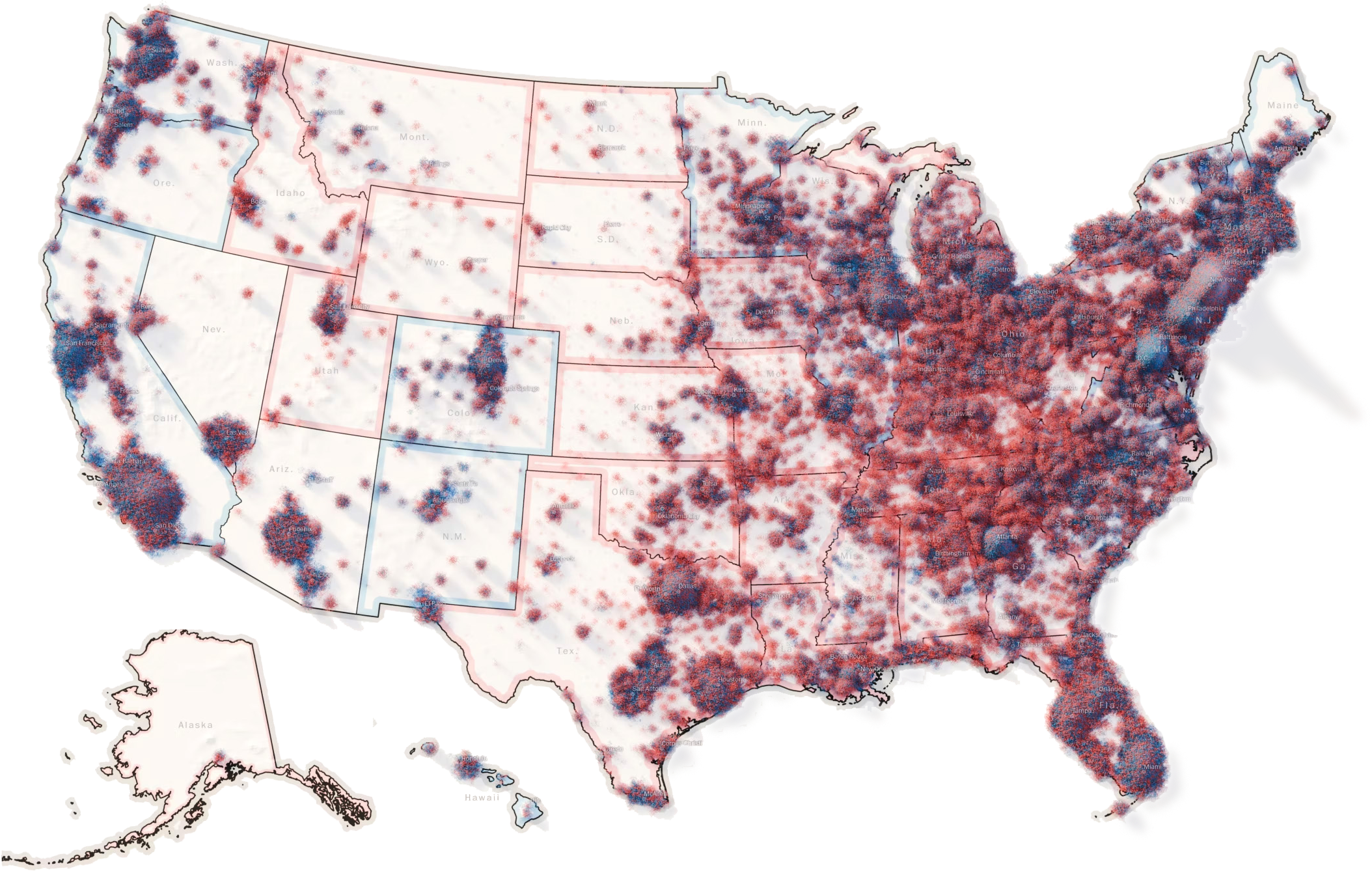
The 2024 election didn’t just shift the balance of power; it overturned the furniture and left everyone scrambling to understand the outcome. The irreplaceable swing voter seemed to at long last do something coherent across the board. The votes swung. A huge slice of the swing vote turned its back on on the Democrat Party and instead took another shot with Trump. Based on how bad living had gotten, the people made their choice. Nobody can disagree with how bad the state of our economy had gotten, and the billions of dollars we were funding to foreign wars.
Concurrently, the earth underneath our electoral map shifted in exciting fashion. Republican gains swept across vast stretches of the country, pulling key counties deep into the GOP camp. Democrats held it together in their urban bunkers, but in the actual world togetherness was looking less and less convincing. The message from rural and suburban America was clear: It’s time for a political change.
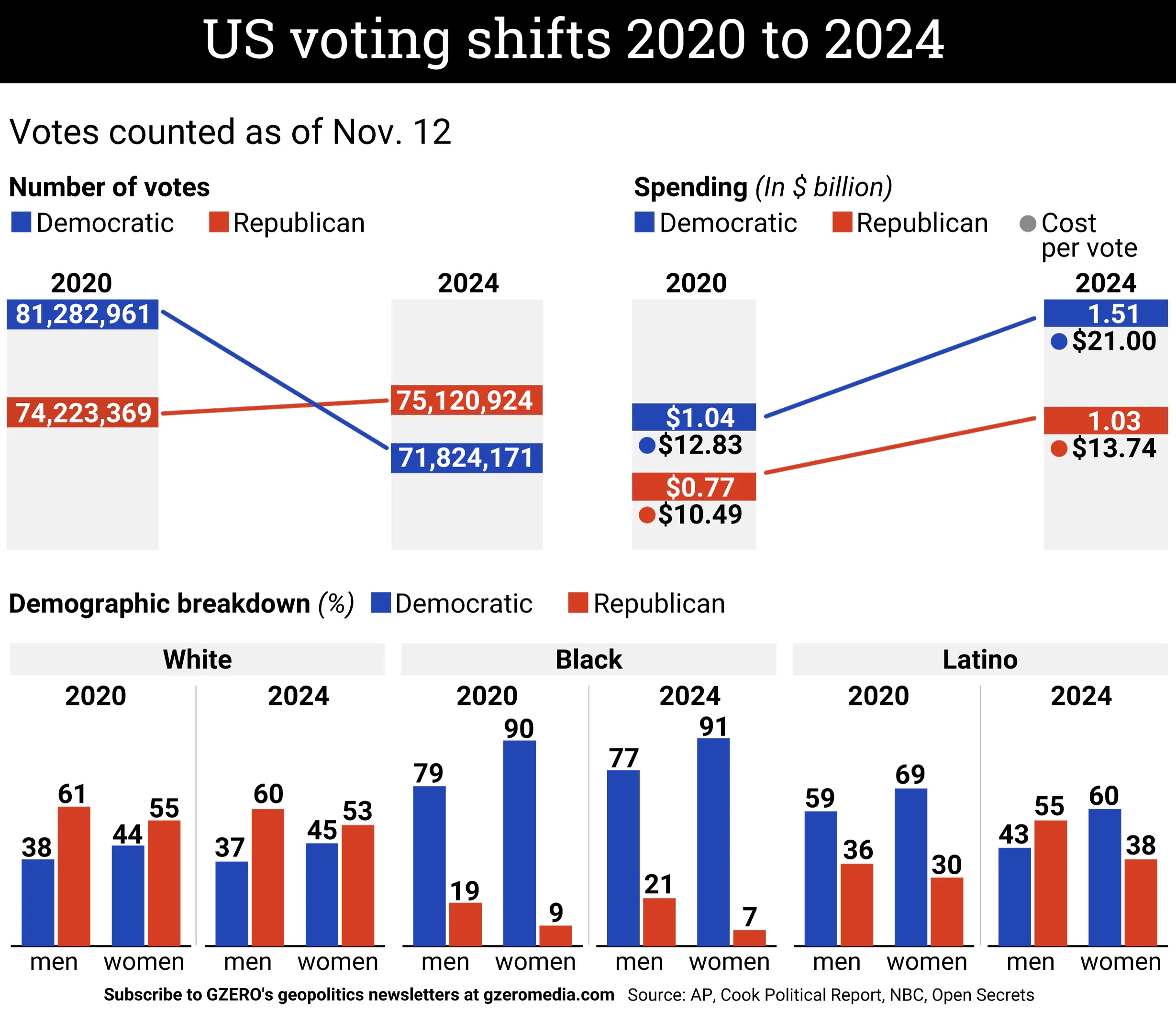
This was not merely a change of party lines; it was a monumental reconfiguration of political priorities. Electorates that once adhered to predictable voting patterns broke loose, relishing the random, ungoverned state that the current political situation provided. Rebellion? Disillusionment? Plain boredom? Whatever you call it, the political landscape is far less stable, and the establishment is in constant consultation, trying to save what can still be saved, to finger what or whom to blame, and to figure out what went wrong regarding this election and what might happen next.
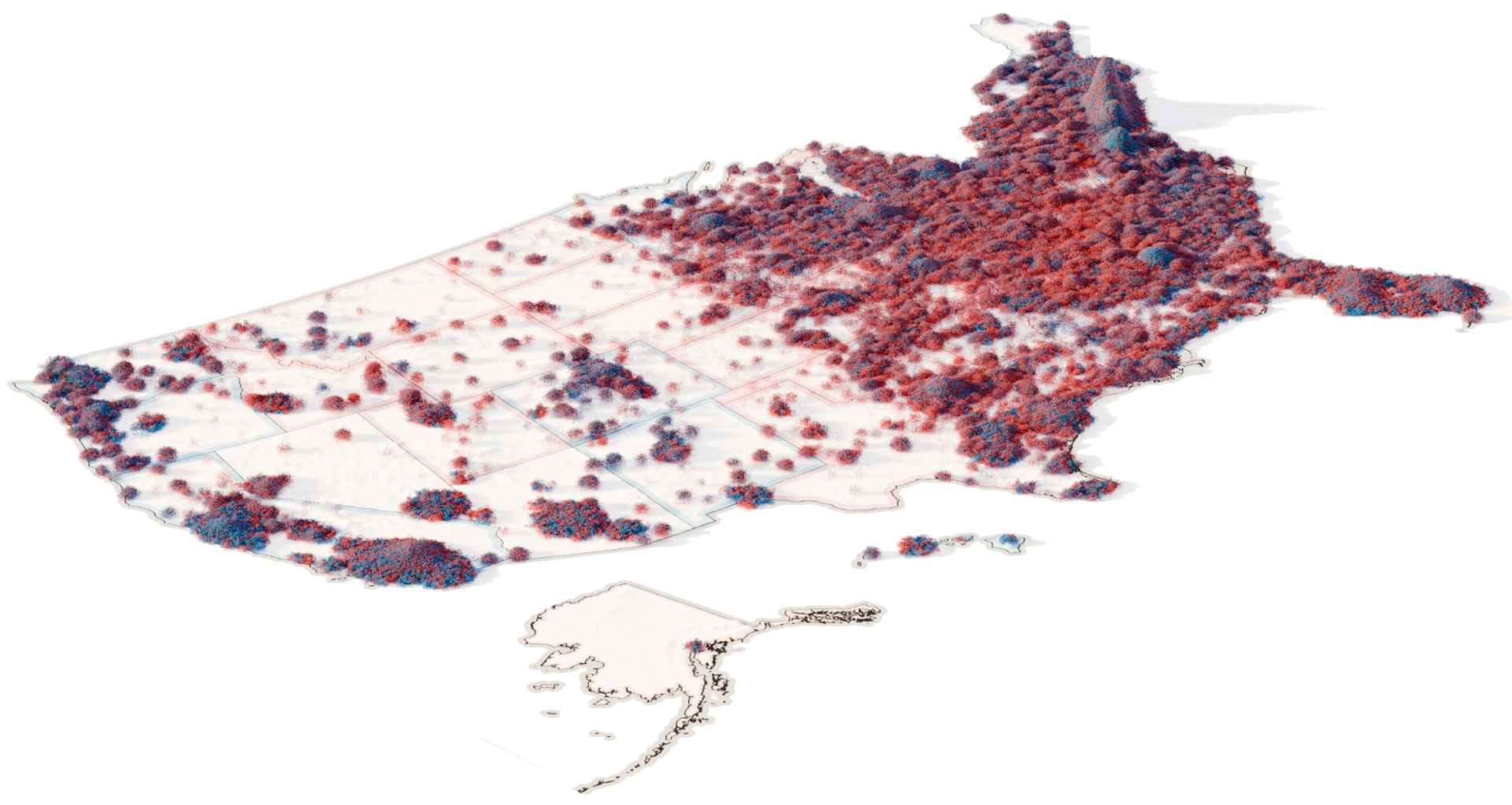
The numbers can’t be distorted, although many politicians would prefer they be. Under President Trump, nearly every indicator of economic health pointed in a positive direction. The average annual inflation rate was 1.89 percent, a fraction of what we’re experiencing today. Prices at the pump, meanwhile, dropped just over 5 percent, to an average of $2.49. Home prices didn’t fall, but half of all 30-year mortgage holders were paying lower rates, in fact, rates were nearly 4 percent lower under Trump than under Biden. And speaking of 30-year mortgage rates, those bad boys shot up by a staggering 138 percent under Biden, leaving a sizable percentage of the American middle class priced out of the housing market.
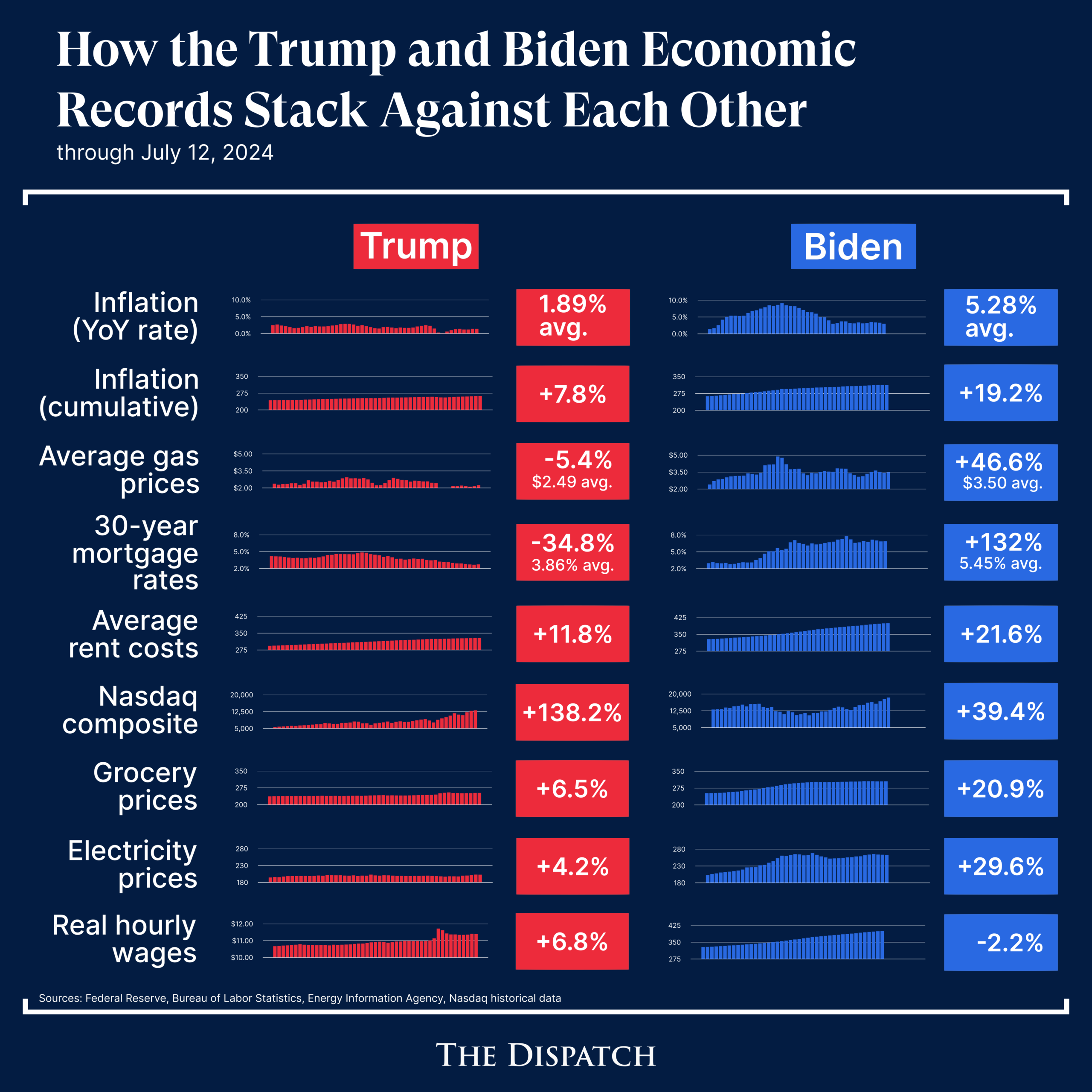
The grocery and electricity prices have risen under both administrations, but Biden’s price hikes make Trump’s look like intentional cherry-picked, uneventful days in economic history. Even on wages which was the one area where it seems Biden and Harris ought to have the upper hand, things are not going that well. Real hourly wages have fallen by 2.2% over the last two years; meanwhile, Trump delivered a real, if modest, 6.8% gain. Whether you look at rent, the Nasdaq, or basic affordability, the data paints a clear picture. Trump’s economic legacy may be imperfect, but enough voters wanted a president who presides over an economy that’s anything but Bidenomic.
Swing States Lost Confidence
A victory in 2024 for Trump wouldn’t be just a win; it would be a methodical dismantling of the Democratic stronghold in key states. It would be Texas and Georgia by storm, flipping counties that had drifted blue in recent years to red. Suburban voters would be returning to Trump, tired of inflation and gas prices, and rejecting the endless promises of economic recovery that never reach their wallets. Perhaps, in 2024, people still wouldn’t enjoy being told their struggles are transitory while their rent doubles.
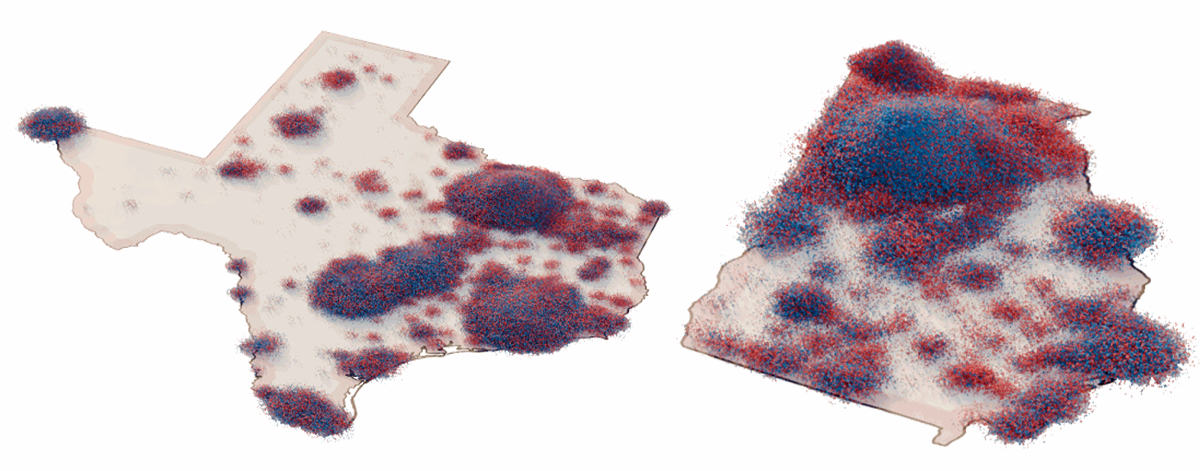
Along with Pennsylvania, a state Democrats rely on like an old friend who has suddenly stopped returning their calls. In 2016, Donald Trump’s campaign drilled home a message of job security and energy independence that resonated with voters in rural and industrial counties throughout the commonwealth. Meanwhile, Joe Biden and Kamala Harris tried to navigate the murky waters of the fossil fuel debate and couldn’t figure out whether to embrace the industry or demonize it. The upshot? Trump surged in eastern and western Pennsylvania, flipping counties that should not have been anywhere near competitive while leaving the Democratic campaign above the muddled waters of the Susquehanna to wonder how it had managed to punch itself in the electoral gut.
The Boarder Czar’s Failure
Under President Joe Biden, immigration has reached eye-watering levels, with a net 10.4 million newcomers since 2021, even more than were admitted under President George W. Bush. This surge encompasses not just lawfully permanent residents but also a colossally risen tide of nonimmigrants, temporary visa holders and, as the Border Patrol keeps reporting, a whole raft of dangerous illegal individuals who aren’t supposed to be here. The administration takes a victory lap for what it calls its humane approach to immigration policy. But Biden and Kamala’s handling of the border situation clearly comes at a cost to a lot of Americans. And the next invoice will simply add up to the dismantling of America. An America permeated by the workforce of the rainmaker.
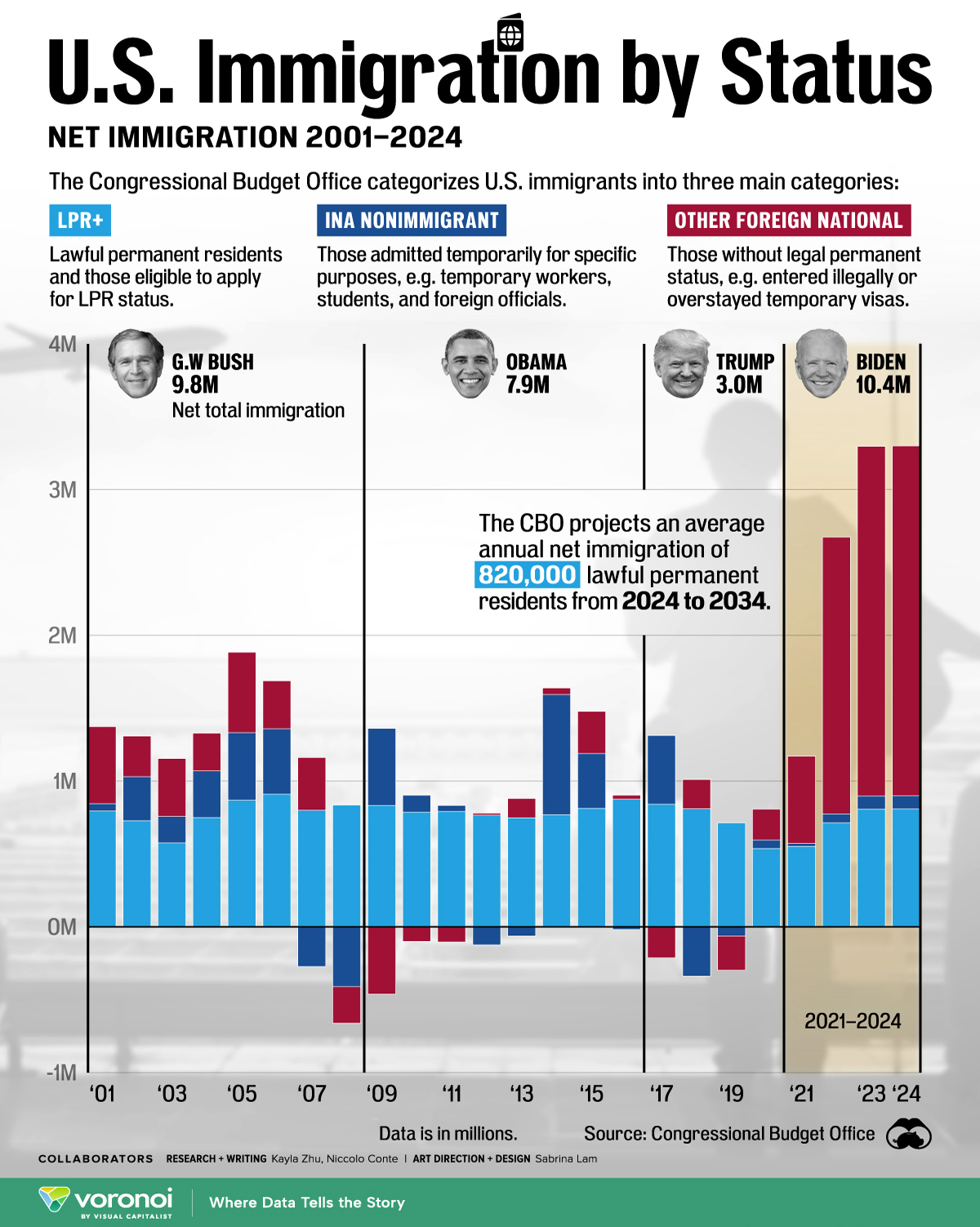
Contrast that to Trump’s time in office, when he sharply reduced net immigration to just 3 million and emphasized control, prioritizing the needs of American workers. Critics decried his policies as inhumane, but they reflected a hard truth that Biden seems unable or unwilling to confront: A nation cannot support an unending tide of immigration and hope for social stability when the immigrant share of the population, as yesterday’s report shows, continues to grow. Who, with these remarkable numbers, exactly benefits from an immigration policy that prioritizes quantity over common sense?
The Market Has Seen Much Better Days
The political climate has always been a key factor in determining how the markets perform, and a look at the numbers over the past few administrations tells a story of sharp contrasts. During the Trump administration, the S&P 500 beat a path upward of a 67% advance, to be exact, underpinned by tax cuts, deregulation, and an overall pro-business atmosphere. Economic growth was distinctly solid and real GDP zipped along a pretty clear, high-growth path, and no signs of a recession were visible even during times of executive branch political turbulence. We don’t need to dwell too long on this burst of market euphoria since most folks who follow politics closely know what happened during this period.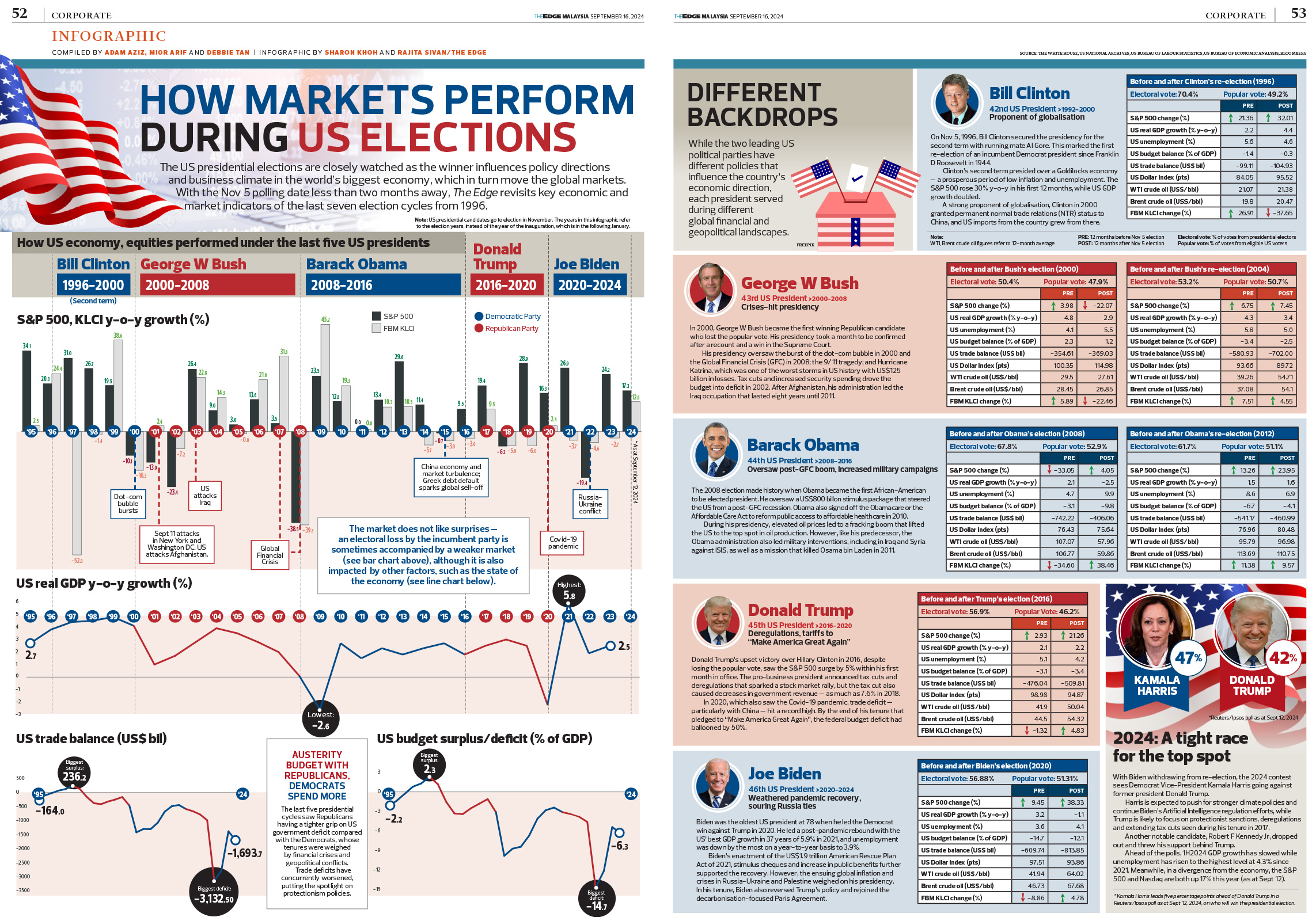
In retrospect, Republican administrations generally produce environments favorable to investors. Democratic presidencies, on the other hand, tend to be characterized by slow growth and expanded federal outlays. Bill Clinton and Barack Obama may, in retrospect, seem to have presided over healthy economic recoveries even though they very much governed in the wake of crises they clearly didn’t prevent. On the other hand, George W. Bush’s financial follies were magnified by the international conflicts he got us tangled up in. Donald Trump, in contrast, delivered a nice market boom, notwithstanding the nonstop opposition and controversies he governed through. But Joe Biden so far hasn’t managed to replicate that success, and left the markets and the voters quite uncertain about the road ahead.
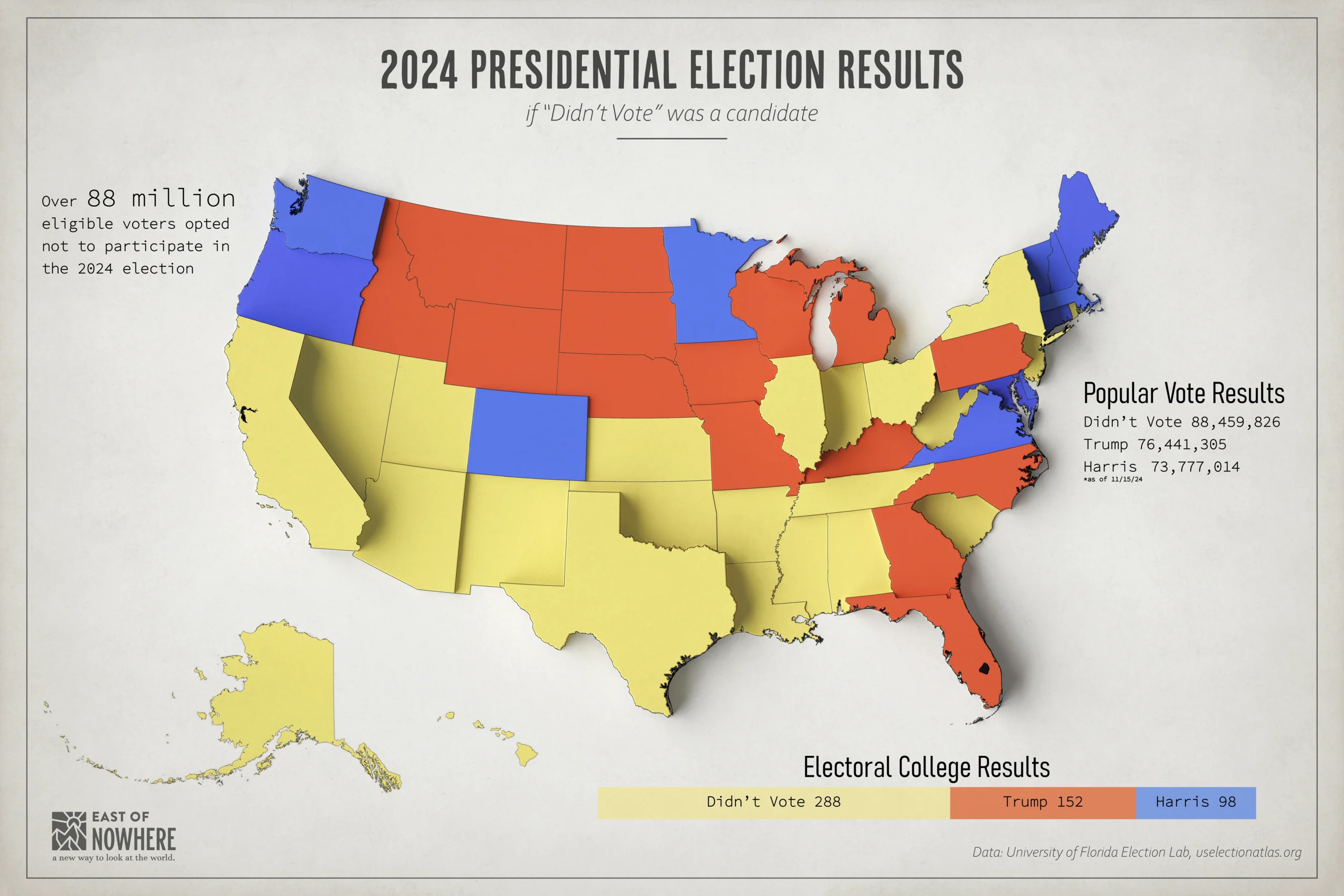
Kamala Harris didn’t lose because America isn’t ready for a female president or because the electorate is inherently bigoted. That tired narrative the insults voters who turned out in record numbers but decided that Harris didn’t offer them anything they could trust or believe in. While she was droning on about equity and social justice in her campaign appearances one got the sense that she also didn’t know what gas was going for these days. Voters were seeking authentic connections and pragmatic solutions, not just lofty ideals that felt disconnected from their everyday struggles. It’s clear that her message didn’t resonate with a broad base, which ultimately contributed to her kamala harris 2024 campaign failure. Many felt that she was out of touch, leading to a lack of enthusiasm that undermined her overall appeal.
If Democrats want to continue blaming their failures on “isms,” they’re certainly free to do so, but it won’t change the facts. The American people didn’t reject Kamala Harris because of her gender or skin color. They rejected her because she couldn’t grasp that the job of a leader isn’t to scold or lecture. That it’s to serve the people. Until her party learns that lesson, they should get comfortable losing to candidates and the next election.
Far Left Podcast The Young Turks, Calls Out The Democrat Corruption and Deception.
California counties turned red in the 2016 and 2020 elections as never before. In fact, the Hill reports, Trump managed to flip ten California counties in 2016, and he basically held on to them in 2020. And the counties in question are not exactly backwaters. They’re home to millions of Californians—about one-seventh of the state’s population. The Democratic Party, hugging the precincts of the redoubts of the coastal elite, seems incapable of understanding this development.
Teamsters president Shan O’Brien expressed disapproval of Vice President Kamala Harris and the Democratic Party for not engaging with union members. He stated that the Teamsters are now supporting Trump and that there were longstanding frustrations that were finally coming to light. O’Brien said that Teamsters were talking to Republicans while they were supporting Democratic candidates, and he contrasted that with the reception members got from Republicans after they started to support Trump.
California’s wildfires draw a torrent of criticism that floods right back to Gavin Newsom. He’s called incompetent, even dishonest, over reservoir “conditions.” Some want to see investigations launched. Others doubt the effectiveness of such inquiries. The wildfire fails discussion touches all Californians, spotlighting the leaders (and the lack thereof) who have allowed the state to become a tinderbox.
Animated Images Sourced from The Washington Post
More from Finance
The Facebook Fraud: How ‘Likes’ Are Manipulating Your Feed
Social media platforms like Facebook aren’t just for sharing memes or catching up with friends—they’ve become critical tools for shaping …
The Layers of Money: From Barter to Blockchain
Have you ever stopped to wonder what money really is? Beyond the coins jangling in your pocket or the numbers …









